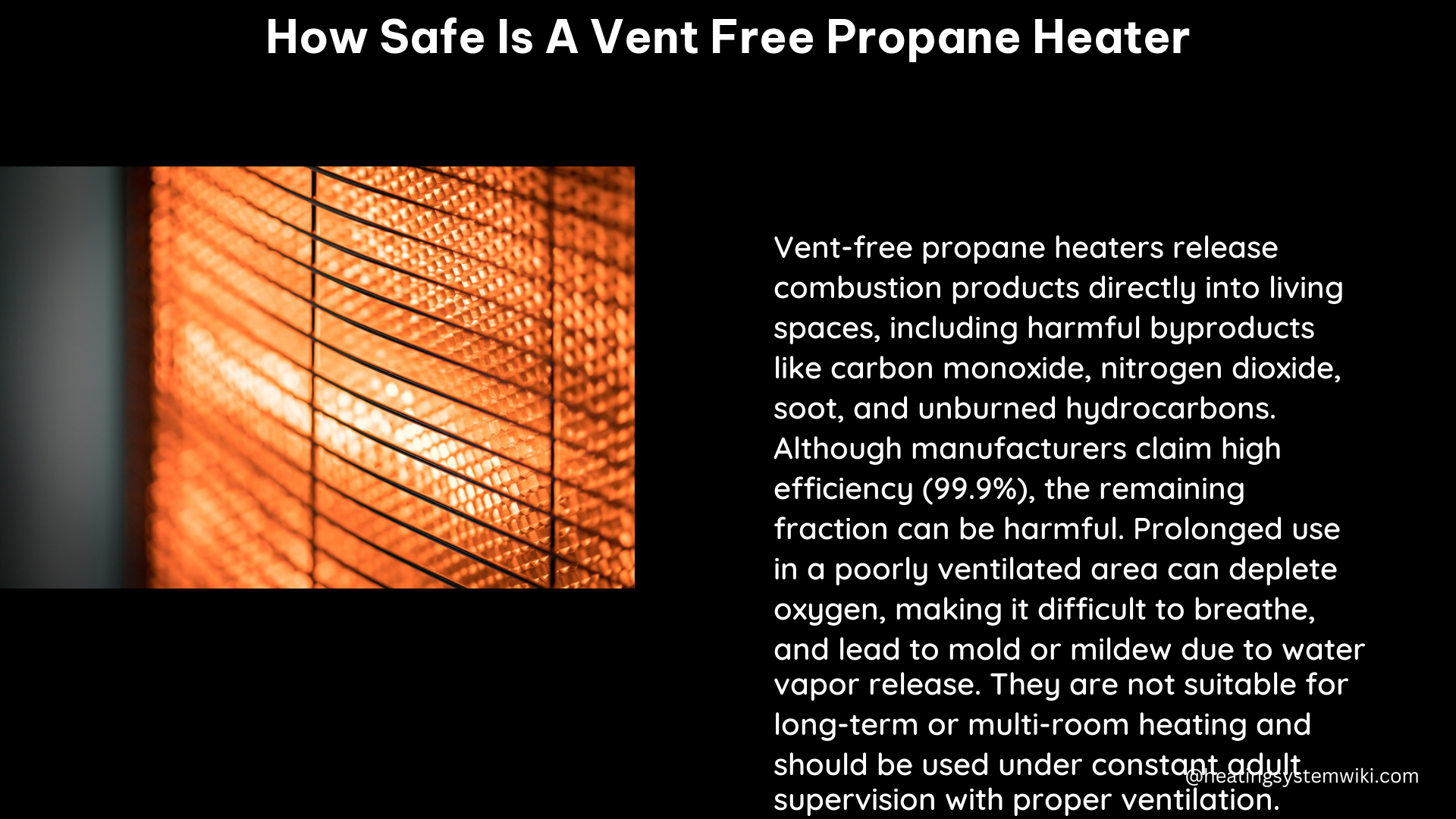Vent-free propane heaters, also known as unvented heaters, are designed to efficiently heat single rooms by utilizing the oxygen in the room to fuel the combustion process. While these heaters can provide warmth and lower energy costs compared to electric indoor heaters, there are several safety concerns that need to be addressed.
Oxygen Depletion Risks
One of the primary concerns with vent-free propane heaters is the potential for oxygen depletion in the room where they are used. These heaters lack a chimney, which means that all the exhaust gases, including carbon dioxide, are released directly into the room. If the heater is left on for an extended period, it can potentially deplete the oxygen levels in the room, making it more difficult to breathe.
To mitigate this risk, many vent-free heaters now come equipped with an Oxygen Depletion Sensor (ODS). This sensor monitors the oxygen levels in the room and automatically shuts off the gas flow to the burner if the oxygen levels drop below a safe threshold, typically around 18% oxygen concentration.
According to the National Fire Protection Association (NFPA), the normal oxygen concentration in the air is around 20.9%. When the oxygen concentration drops below 19.5%, it can become difficult to breathe, and levels below 16% can be life-threatening. The ODS in vent-free heaters is designed to prevent the oxygen levels from reaching these dangerous levels.
Water Vapor Production

Another concern with vent-free propane heaters is the production of water vapor during the combustion process. These heaters release a significant amount of water vapor into the room, which can potentially lead to the buildup of mold or mildew on surfaces over time.
To mitigate this issue, it is recommended to crack a window or door while using the vent-free heater to create fresh airflow and prevent the accumulation of water vapor. Additionally, it is essential to monitor the room for any signs of moisture buildup and address any issues promptly to prevent the growth of mold or mildew.
Carbon Monoxide Risks
Vent-free propane heaters also pose a risk of carbon monoxide (CO) poisoning, as the combustion process can produce this odorless, colorless, and potentially deadly gas. Carbon monoxide can quickly build up in the room, leading to symptoms such as headaches, dizziness, nausea, and even unconsciousness or death.
To address this concern, it is crucial to install a carbon monoxide detector in the room where the vent-free heater is being used. The detector should be placed near the heater and away from windows, doors, or vents to ensure accurate readings. Additionally, it is recommended to have the heater serviced and inspected regularly by a qualified technician to ensure proper functioning and safety.
Technical Specifications and Usage Guidelines
Vent-free propane heaters typically have an input rating ranging from 5,000 to 40,000 BTUs per hour and an efficiency rating of 90% to 98%. These heaters are designed to be wall-mounted and can be turned on and off as needed.
However, it is important to note that vent-free heaters should not be used for long-term heating or heating more than one room. They should always be used under constant adult supervision, and the manufacturer’s instructions should be followed carefully to ensure safe operation.
Regulatory Considerations
It is also important to be aware that vent-free propane heaters are illegal in some cities and states due to the risks associated with carbon monoxide poisoning and other safety concerns. Before purchasing and installing a vent-free heater, it is crucial to check with your local authorities to ensure that it is permitted in your area.
Conclusion
While vent-free propane heaters can provide efficient heating and lower energy costs, they also come with significant safety concerns that need to be addressed. To ensure safe use, it is essential to follow the manufacturer’s instructions, install an ODS and carbon monoxide detector, crack a window or door for ventilation, and have the heater serviced regularly by a qualified technician.
By understanding the risks and taking the necessary precautions, you can safely enjoy the benefits of a vent-free propane heater in your home.
References:
– Are Propane Heaters Safe for Indoors?
– Any Drawbacks to Ventless Heaters?
– How to Safely Use Ventless Gas Heaters
– How Safe are we Heating our 250sqft House with a Ventless Propane Heater?
– Avoid Unvented Gas Heaters
